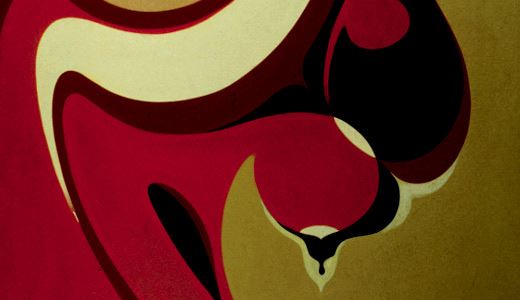EH: He went down to Bridges & Smith and asked them if he could mix two kinds of paint, and they told him no. GC said, “Well, give me a can of both anyway,” and went home and started mixing them. He really liked the results. GC was so experimental, that’s why the other artists like Sam and Bob Carter would come around. GC was throwing stuff on the canvas, layering it, raking the paint around and things like that. Hard as a brick when it dried. His paint would dry so hard you could pound it with your fist.
Robert Douglas: I have bout 90% of his work archived as slides, and I have about nine hours of cassette tapes of interviews with GC. I place him as one of the first generation of African American professional artists (in Louisville). As an art historian I distinguish between trained and untrained, naïve and primitive. Of course, we are all naïve until someone recognizes our talent and we then get training, but GC was one of the first African Americans to receive a degree in art from the University of Louisville. At that time, he was convinced of his own ability, but he realized that he needed some credential from the mainstream establishment, so he got a degree.
GC was highly technical, a craftsman par excellence, and he was trained to be a craftsman in whatever he did, because he was raised on a farm by his father. His father had a classical education, and was an ordained Presbyterian minister, and his mother made sure that all the children had music and arts training. She taught them all how to use watercolors. So from the very beginning he had some teaching, because his mother had some training.
EH: GC also had three other brothers: Bill, John, and Gus, and they were all artists, painters, except that Bill became an architect operating out of the Washington, D.C. area, and Gus painted as a paraplegic, because he was hurt in WWII.
KW: So Dr. Bob, you put yourself in that second generation of African American artists?
RD: I found three or four other artists of G.C.’s generation: William Guest, who worked in Smoketown, and Carl Ramsey, Elijah Wilson, and there is at least one other.
KW: But of those names, it was G.C. who mentored the next generation?
RD: Yes. He was the stellar person of that group. The one who produced the greater volume of work, and the greatest diversity of work. I have identified 12 distinct periods for his work. In the exhibit at Filson, you see six examples.
KW: Talk about the imagery in his work.
EH: When you talk about his techniques, his work evolved into more sculptural forms. Meaning he would take, for instance, pegs or dowel rods and cut them into specific pieces and then inject that into the canvas with strips of cardboard. He’s got one piece where he’s literally taken wire and shaped it with his elliptical shapes painted onto the canvas and penetrated the canvas so that he paints the piece all one color but what happens? You have the flat surface painted the same color as the wire is painted but it gives you two different colors even though its painted the same color. But you can do that when you come away from the canvas…come away from the surface. It’s almost like Bas Relief.
WD: The back of the canvas was as much art as the surface. GC would take that wire and actually do a negative/positive sort of thing to make it stand out. So whatever wire was on the back, he would pierce the canvas, and whatever wire was on the front would intersect the wire on the back and thus raise that canvas.
Also what GC was doing, he couldn’t find the shape that he wanted, so he invented a little tool that he would use to bend the wire, so he would have square shapes in the wire, or a loop. It was all a process.
He was not only an artist. He was also an inventor.
KW: Did he show much outside of Louisville?
RD: Yes. Sam got him a show in DC, and he had shows around in different places. I curated a show that included his work in Rome and Sicily, so he exhibited internationally at least once.








![Detail of November '88 (Totem Pole with Little People) [Collection of Ed Hamilton]](https://images.squarespace-cdn.com/content/v1/54ef4d4ee4b002862ddb9057/1524518267340-214BBGX2AMHG234H9279/Detail+of+November+%2788+%28Totem+Pole+with+Little+People%29+%5BCollection+of+Ed+Hamilton%5D.jpg)

